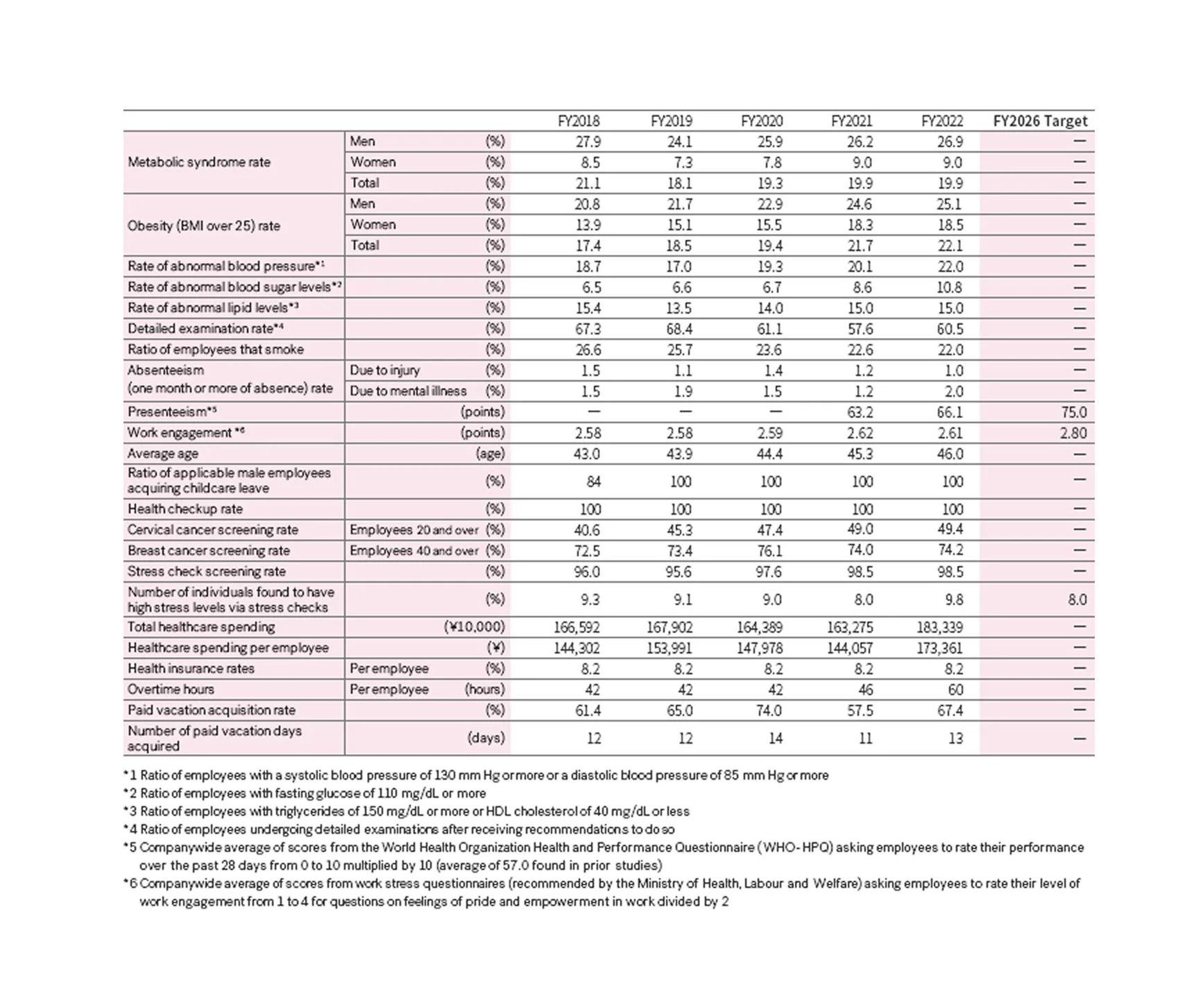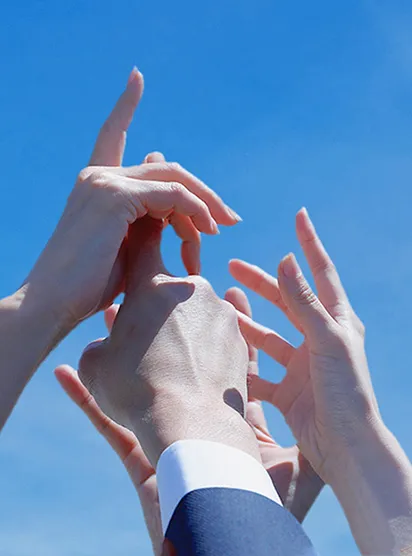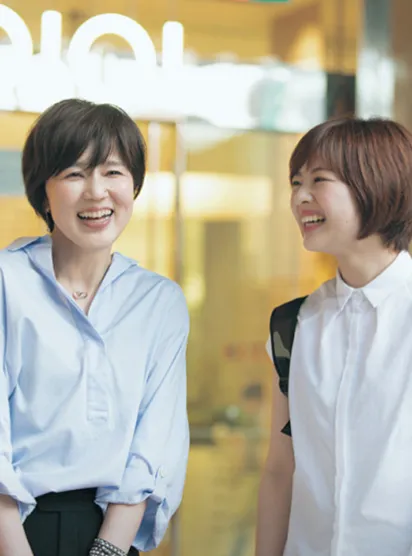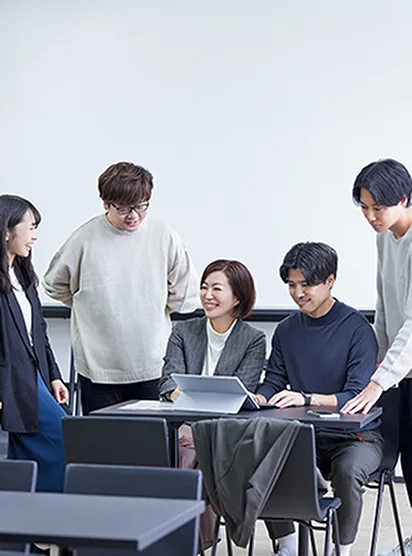MARUI GROUP's Healthcare Management
MARUI GROUP's Healthcare Management
MARUI GROUP's vision for well-being management is an approach to management that creates new value from the perspective of well-being in order to spread happiness throughout society. We aspire to help grant people greater levels of fulfillment through the services of MARUI GROUP. Generating the intangible value and trust needed to accomplish this goal will require that we continue to evolve our organization in order to achieve higher levels of work engagement by increasing the number of empowered and energized employees who feel happy themselves. This process will create value for both employees and society and thereby contribute to the co-creation of happiness for society.
Management's Commitment
Hiroshi Aoi
President and Representative Director
Representative Executive Officer, CEO
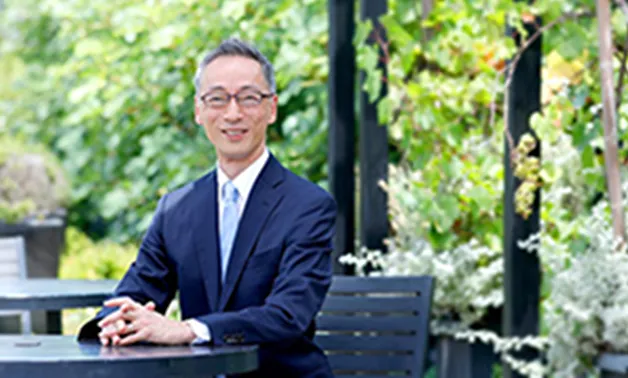
To contribute to the happiness of all stakeholders, we hope to realize work styles that enable employees to continue growing while tackling new challenges that are meaningful for society and future generations as well as for themselves.
MARUI GROUP began practicing healthcare management after the establishment of the Company's health insurance union in 1962. In the 57 years that followed, we have continued our passionate approach to healthcare management. One particularly noteworthy milestone on this path was the establishment of the Marui Health Insurance Union Building in 1970. Neighboring MARUI GROUP's head office, this building features the latest health examination equipment and checkup functions. I was in elementary school when this building was completed, and I remember being surprised at how impressive it was in comparison to the head office. Looking back, it is apparent that our founder was incredibly passionate about the health of employees from that time.
After joining MARUI GROUP, I often witnessed my predecessor advising employees, at morning assemblies and other occasions, to undergo intensive health examinations through the health insurance union should any concern arise. I was baffled by the fact that he always ended assemblies on the topic of healthcare. When I think about it now, this natural, ongoing emphasis on healthcare by senior management was probably what led to the close coordination between MARUI GROUP and the health insurance union seen today along with our high rates of health examination.
Our founder viewed employees as family members, sparking his commitment to healthcare, and my predecessor was a staunch advocate of intensive health examinations. These two individuals fostered healthcare management as an element of MARUI GROUP's corporate culture. Thanks to their contributions, the foundations for a healthcare management approach aimed at addressing metabolic syndrome and other lifestyle diseases were already practically complete when I took up the mantle of president.
With these foundations in place, we made the decision to take the next step based on the definition of health put forth by the World Health Organization. This definition of health is "a state of complete physical, mental and social well-being and not merely the absence of disease or infirmity." If the first step of healthcare management was ensuring "the absence of disease or infirmity," the next step would be promoting "a state of complete physical, mental and social well-being." Recognizing our new goal, I was committed to rising to the challenge.
To propel us forward on this journey, we established the Healthcare Management Project Team in 2016 and promptly kicked off initiatives with assistance from the Health Management Division (currently Wellbeing Promotion Department) set up in 2014. Our healthcare management initiatives are supported by the project team, which is composed of enthusiastic employee volunteers. These members decide on activity policies and implement initiatives that they planned at their respective workplaces. These activities are supported by the Health Management Division (currently Wellbeing Promotion Department) and the chief health officer. We were also lucky to have gained the services of Dr. Reiko Kojima, a passionate company physician. The passion for healthcare management and leadership of Dr. Kojima are proving to be a massive driving force behind our initiatives. Thanks to her guidance, MARUI GROUP has been selected for inclusion in the Health & Productivity Stock Selection for five consecutive years, from 2018.
Even having received this recognition and come this far, we still strive to go further. Our end goal is to create happiness through our business. This will, of course, require that our employees be in good physical health and that we implement work style reforms. Most important of all, however, will be for us to change our mind-set with regard to our jobs and work in general. This is especially important given the fact that the capitalist system that has exercised hegemony since the industrial revolution is beginning to reach its limits, and we are now in an era urging transformation to more sustainable societies and economies. Accordingly, there has been a significant change in how we are expected to work and the output anticipated.
Up until now, the primary goals of work have been to improve productivity or beat the competition in order to increase profits or scale of business. These goals were prefaced on economic growth. Going forward, however, businesses will need to help resolve the various issues impeding the realization of a sustainable society and environment in order to contribute to the happiness of all stakeholders. What these businesses will need is creativity. It is creativity that will find resolutions to various social issues that could not be reached by developing a business through prior approaches, and it is creativity that will generate the innovation needed to implement these resolutions.
The natural question is thus: How can businesses exercise greater creativity? To find the answer to this question, we decided it was necessary to stop and reexamine what our job is and what is the meaning of our work. The answer we found begins with reassessing the prior view separating work and life and the thinking that caused people to compartmentalize and separate themselves from their work. We must then link our work to undertakings that are meaningful for our lives and for our children and society in order to ensure that our work is motivating. This approach will no doubt give us strength and become a source of creativity. This is our answer to this seemingly unanswerable question.
The process of engaging in work that is meaningful for ourselves and for our children and society and continuing to grow through this work will contribute to the happiness of all our stakeholders. Realizing such work styles through our business is the approach of the well-being management we look to advance into the future.
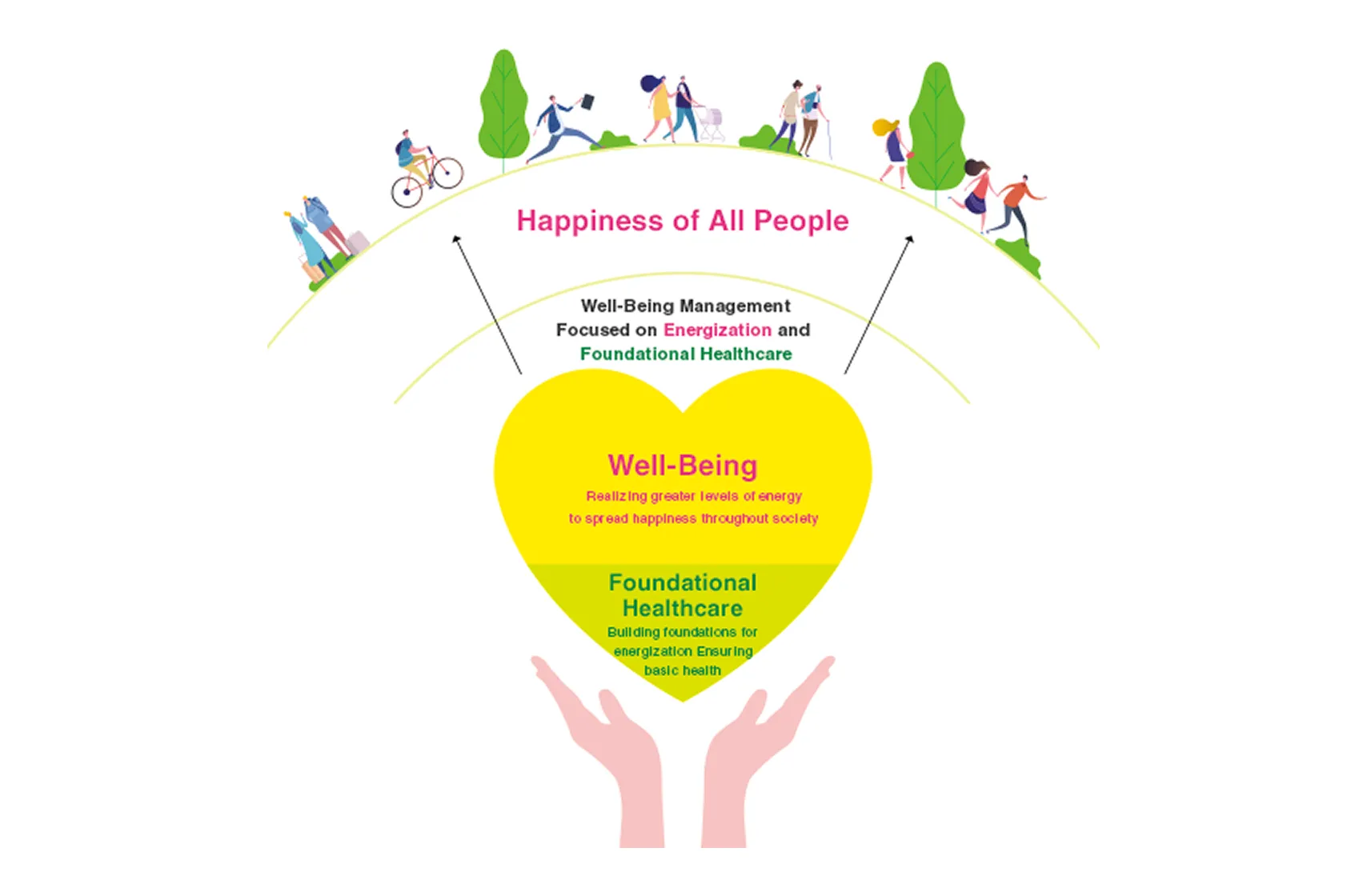
Evolution of Well-Being Activities and Frameworks
MARUI GROUP began practicing well-being management after the establishment of the Company's health insurance union in 1962, and we have continued our passionate approach toward well-being management ever since. With a Company physician heading up the Health Management Division (currently Wellbeing Promotion Department), which was established in 2014, we are promoting well-being management with the aim of generating happiness through our business.
Evolution of Well-Being Activities
| 1962 | Establishment of MARUI GROUP's health insurance union |
|---|---|
| 1970 | Opened Marui Health Insurance Union Building |
| 2008 |
Commencement of overtime reduction project Start of Health Improvement Program by MARUI GROUP's health insurance union that contributed to a large reduction in obesity rates in comparison to the nationwide average |
| 2011 |
Introduced health management committee system Established Health Management Division (currently Wellbeing Promotion Department) and appointed dedicated Company physicians |
| 2013 | Introduced wellness leader system and physical and mental health consultation hotline |
| 2014 |
Appointed Company physician as general manager Began analyzing health examination data of all employees and relationship between lifestyle patterns and attitudes toward work at Health Management Division (currently Wellbeing Promotion Department) Started holding self-care training sessions for all employees across Japan Appointed wellness leaders nationwide to help alleviate women's health concerns |
| 2015 | Appointed chief health officer (CHO) |
| 2016 |
Introduced Resilience Program to promote habits to energize senior managers in terms of their body, mood, mental state, and thinking Incorporated new healthcare management items into labor agreements to clarify responsibilities of the Company and of employees Appointed outside advisors and began analyzing healthcare management practices and data Formulated Groupwide Healthcare Management Project Team* |
| 2018 | Began holding Group tests for nationally accredited health master examination |
| 2019 |
Began holding Group tests for nationally accredited women's health examination Appointed Company physician as executive officer |
| 2020 | Changed name of Health Management Division to Wellbeing Promotion Department |
| 2021 | Appointed Chief Well-being Officer (CWO) |
* Name changed to Well-Being Management Project Team in 2021
Well-Being Management Promotion Structure

Comments from contributors
Well-Being Management—Key Brick in Foundation for Sustainable Growth
I first became involved in employee healthcare management in 2013 when I was appointed general manager of the Personnel Division and director of the health insurance union. Actually, two years prior to that, a gym opened up in my neighborhood, and I began going there with my wife. My gym excursions led to my losing 20 kg, which transformed my life. My taste in fashion changed, and I started shopping at stores that would not have turned my head previously. Truly, health changed both my awareness and my behavior. For this reason, I was intimately aware of the importance of healthcare management when I was assigned to the position of chief health officer in 2015. Nobody denies the value of health, and I therefore thought that spreading healthcare awareness would not be particularly difficult. However, it is hard to envision how health contributes to improved performance, and changing one's lifestyle is always a burden. Everyone knows the value of health, but so many of us are unable to change. I was reminded of this fact when I became chief health officer, which is the biggest obstacle to promoting health. Nevertheless, I see the potential for well-being management to become a key brick in MARUI GROUP's foundation for sustainable growth. To realize this potential, we will need to prove the value of this approach through engagement that links health and management and helps employees truly feel the results.

Tomoo Ishii
Senior Managing Executive Officer and CHRO(Chief Human Resource Officer)In charge of General Affairs, Personnel, and Well-being Promotion
Director of MARUI GROUP's Health Insurance Union
Well-Being Energization
MARUI GROUP is stepping up well-being initiatives aimed at energizing employees. These initiatives focus on energizing and empowering employees to increase productivity through changes in awareness and behavior in order to drive improvements in corporate value and enable greater contributions to be made to society.
Members of the official Groupwide Well-Being Management Project Team and the members of management that act in a supporting role have a central part to play in planning and implementing various well-being activities for the purpose of promoting well-being energization.
Comments from contributors
Evolution of MARUI GROUP's Business through Well-Being Management
Our well-being management is an approach toward realizing the MARUI GROUP's overall mission of helping build an inclusive society that offers happiness to all that looks at this mission through the lens of well-being. Generally, people tend to view healthcare in terms of preventing illnesses, by drinking responsibly, for example. This image makes health seem like a personal issue. We thought to overturn this image to realize more inclusive healthcare management that helps everyone feel more energized and happier. For this reason, we began referring to healthcare management as "well-being management." The degree to which people's bodies, emotions, brains, and minds are energized will necessarily have an impact on the nature of their actions. Together with all stakeholders, both internal and external, we aim to contribute to the realization of a flourishing, sustainable society in which everyone is happy and radiant as they feel empowered in all of their activities.
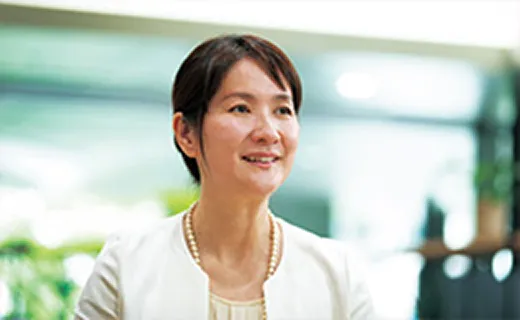
Reiko Kojima
Director, Executive Officer, and CWO(Chief Well-being Officer) General Manager,Wellbeing Promotion Department MARUI GROUP
Well-being as a Management Strategy for Energizing Employees
In its well-being management, MARUI GROUP believes it is important to go beyond the basic approach of preventing illness (basic health) in order to foster more energized and happy employees (well-being). We have therefore been promoting well-being management that combines these approaches. In addition, well-being management has been positioned as an important element of our strategies and is thus being practiced on a Groupwide scale through coordination between the Wellbeing Promotion Department and MARUI GROUP's health insurance union.
MARUI GROUP's Well-Being Management
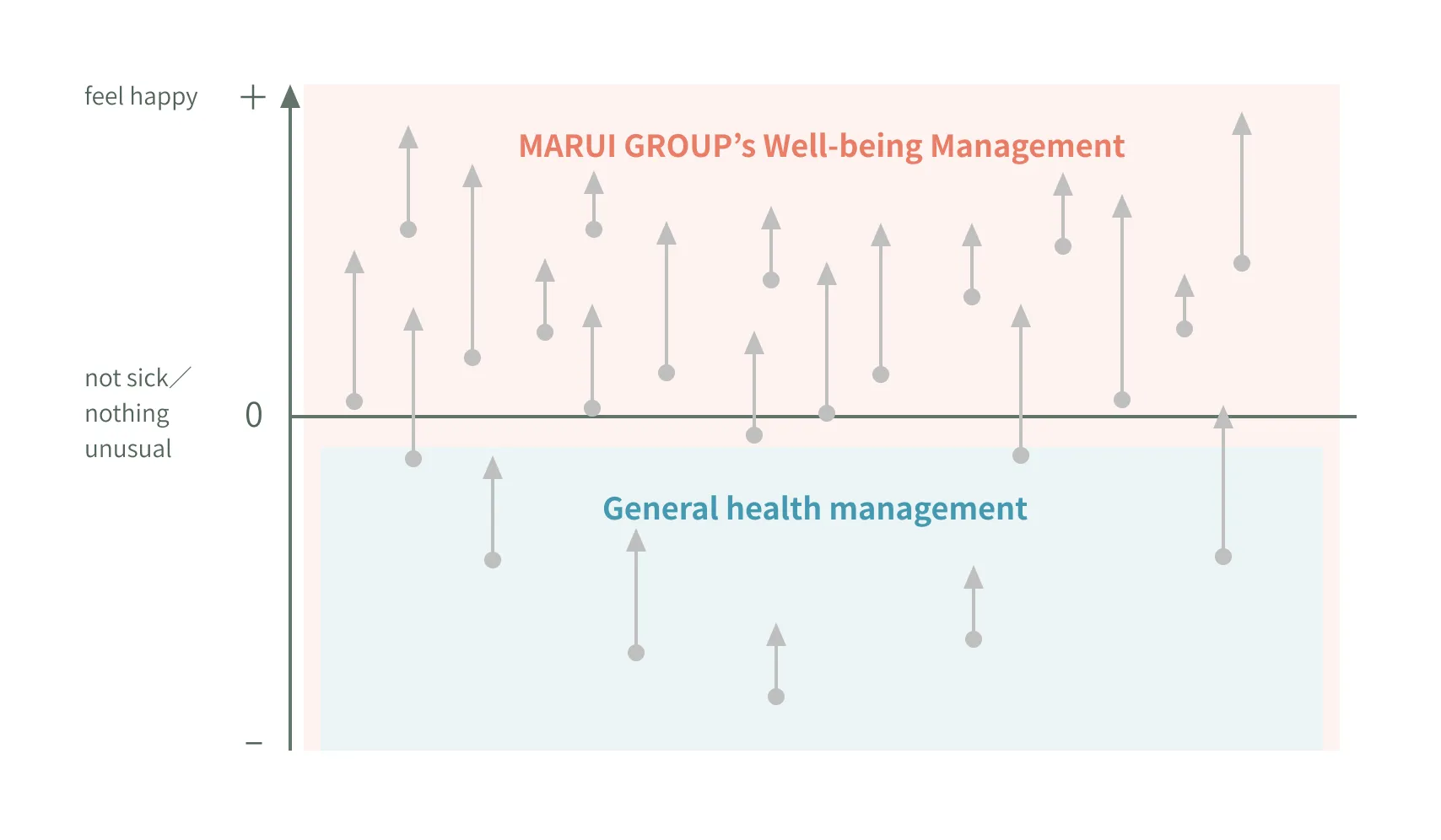
Corporate Culture of Voluntary Participation Accelerating Well-Being Activities
MARUI GROUP has prepared a plethora of training programs and open application project teams in which employees can participate on a voluntary basis. well-being activities such as the Well-Being Management Project Team and the Resilience Program are also advanced through voluntary participation. Activities led by members assembled on a voluntary basis have proved to be highly proactive. The bottom-up activities of the Well-Being Management Project Team assembled from various workplaces are supported by managerial staff members who have taken part in the Resilience Program, driving the dissemination of these activities inside and outside of the Company. By cultivating a corporate culture that encourages employees to voluntarily engage in well-being activities, MARUI GROUP looks to energize the entire organization.
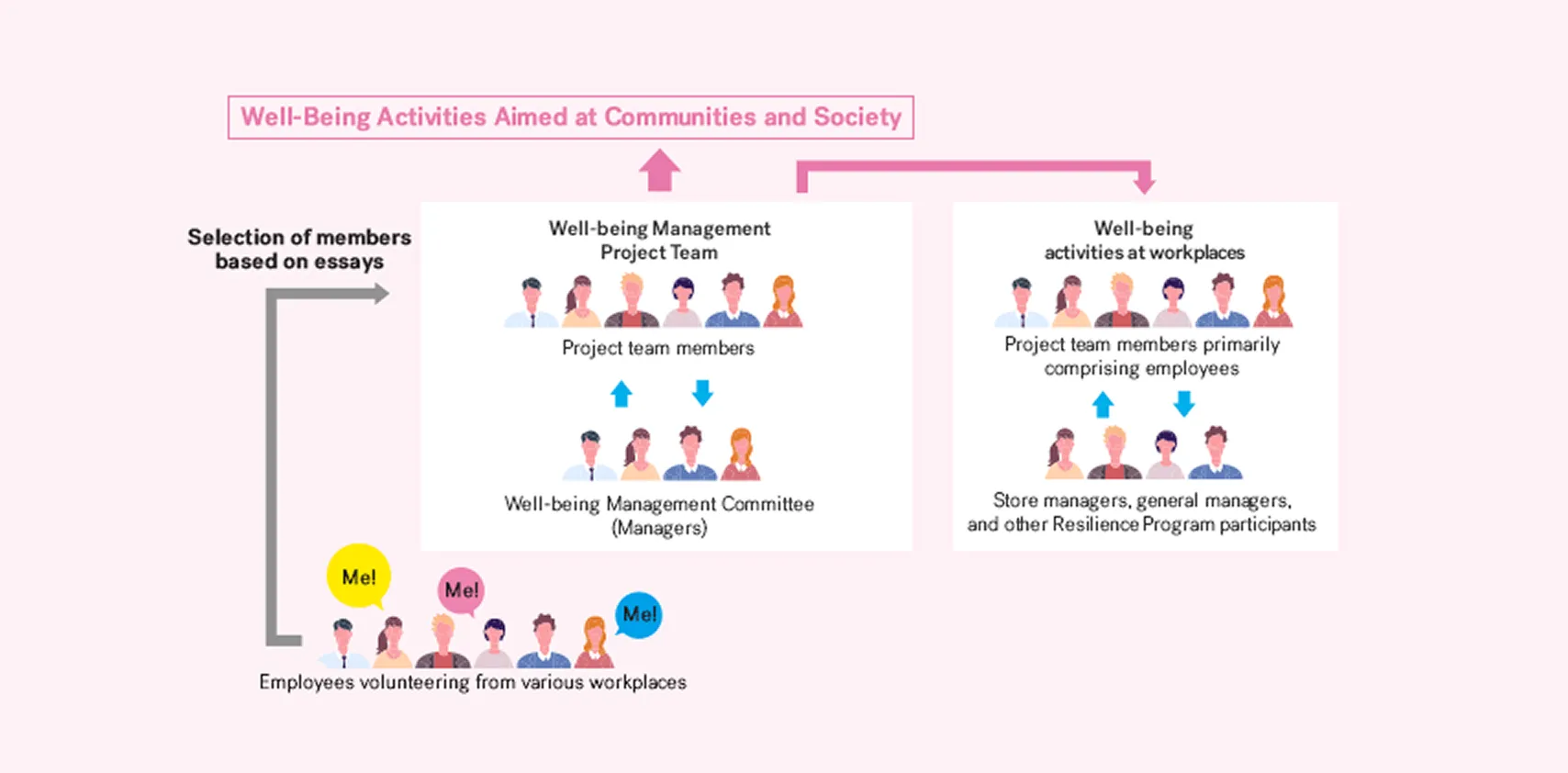
Well-Being Activities Promoted by Project Team Members
Established in November 2016 as an official Groupwide project team, the Healthcare Management Project Team is now in its fifth year (as of May 2021). In the first year of its activities, this project team primarily focused on spreading awareness of healthcare management. The emphasis in the second year was increasing understanding of healthcare management. In its third year, this project team was renamed the Wellness Management Project Team and extended its activities to outside of the Company, and these activities continued in its fourth year. In its fifth year, the project team was renamed the Well-Being Management Project Team. Activities in this year included initiatives related to femtech and other women’s health issues and efforts for improving employee engagement.
Project team members are selected from among applicants based on essays and members are changed on an annual basis, producing a new set of autonomous employees with increased knowledge and awareness each year. These employees play a central role in promoting well-being activities throughout the Group, involving other employees in the process.
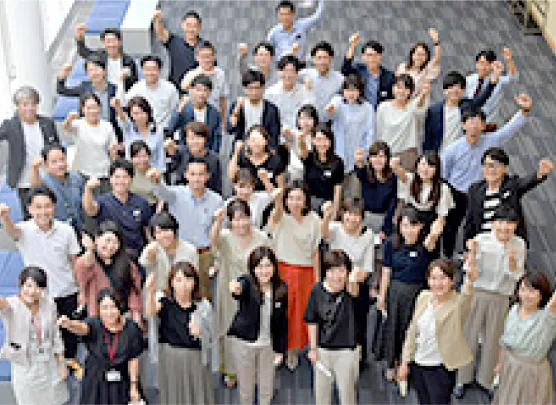
At the beginning of each period, members leaving the project team confirm progress together with new members before passing these activities on to them
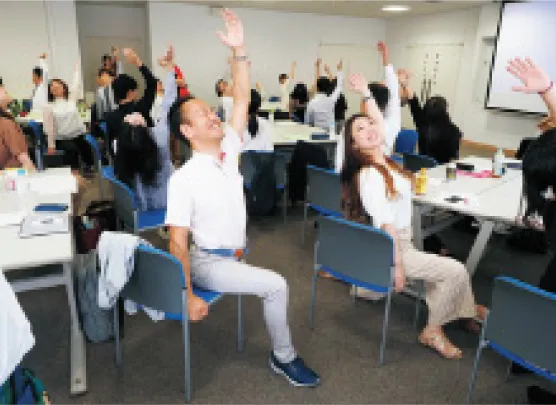
A stretching session is held before the start of each regular monthly project team meeting in order to energize team members
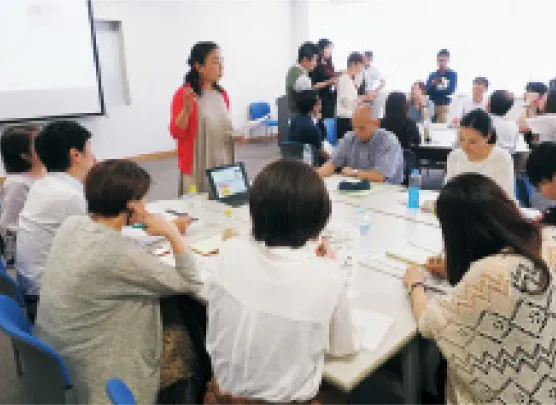
Members act as instructors to one another on the topics of body, mood, mental state, and thinking, all important elements of health and happiness
FY2022 Initiatives: Well-being Events Examining Women's Health Issues
MARUI GROUP is encouraging a more open discussion on women’s health issues that were previously rarely talked about through such efforts as inviting femtech companies to become tenants in the concept shop section of Shinjuku Marui Main Building and arranging panel discussions with younger entrepreneurs.

Resilience Program Aimed at Senior Management
The understanding of senior management is necessary to enable employees to become more energized and empowered in their work. The Resilience Program is a one-year program that targets the officers, general managers, and chief managers that have a large influence on their organizations. In this program, managers learn habits that energize themselves and those around them to realize overall higher levels of energy, have a positive influence of those around them, and energize their entire organization.
Before the start of the program and after its conclusion, evaluations are conducted through feedback from the participants, their subordinates, and their families to analyze data on the participants' own energy levels and their influence on others. These analyses have indicated an improvement in participant energy levels after taking part in the program. As of April 31, 2022, 150 individuals had participated in the program, and these individuals are now proactively supporting internal well-being activities.
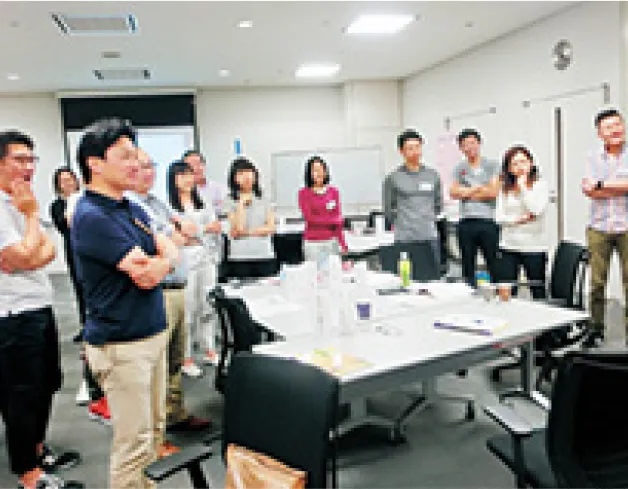
Intensive resilience training seeing participation by officers, general managers, and other managers
Influences on Workplaces
After managers have participated in the Resilience Program, improvements have been observed in the energy levels of the organizations overseen by these managers.
The graph below indicates changes in the stress check results of organizations overseen by program participants (in comparison to Companywide averages). Following participation by managers, improvements were seen in the stress rates of these organizations along with increases in work engagement indicators such as workplace motivation and respect for individuals, indicating changes in the attitudes and stances toward work of individual employees. These results demonstrate that initiatives based on the knowledge and habits gained through the program are having a positive influence on those surrounding participants.
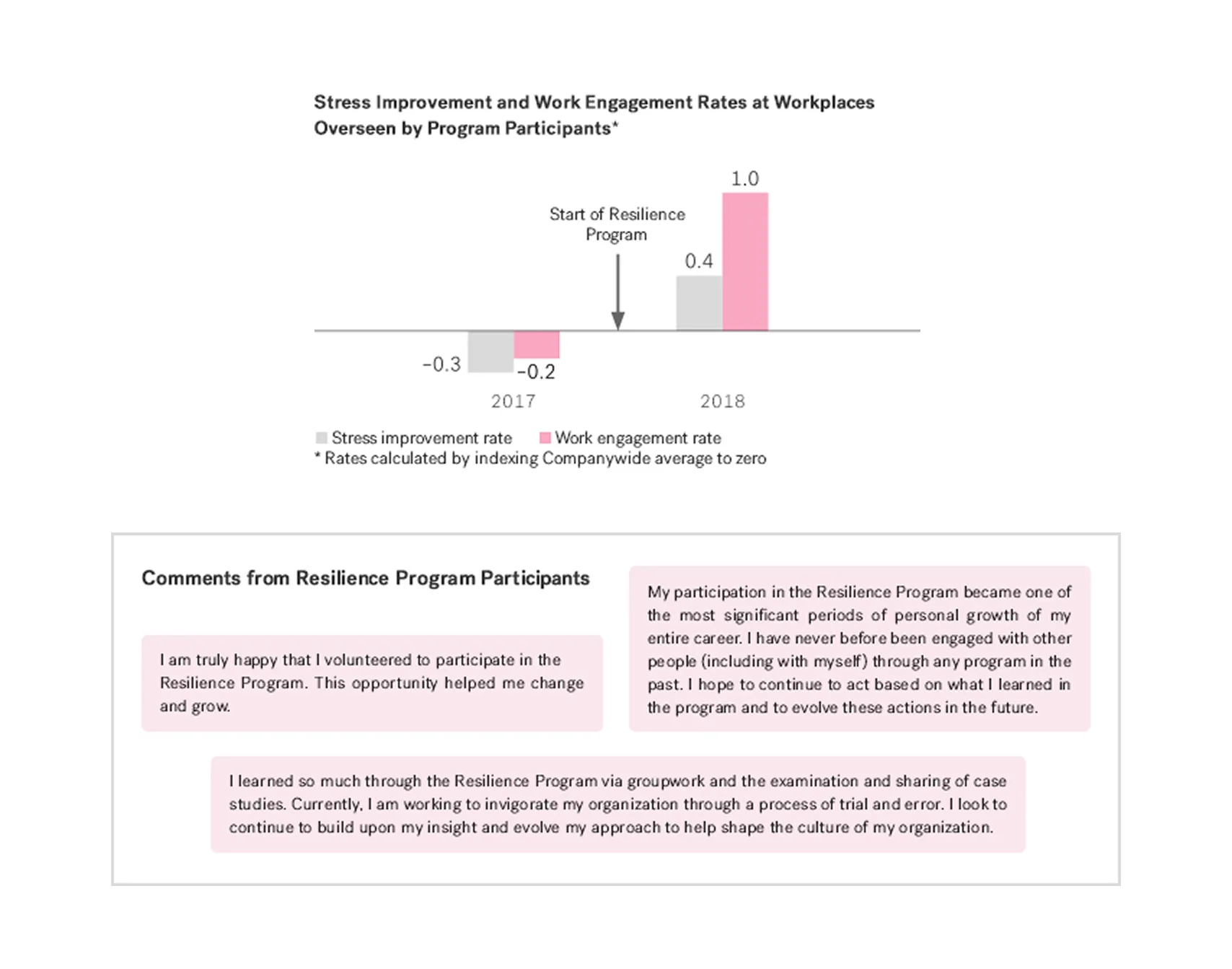
Tracking of Well-Being Activities and Organization Energy
Analyzing the benefits of well-being activities enables us to track the link between well-being activities and organization energy levels. Workplaces actively engaging in well-being activities have seen improvements in work engagement indicators, providing quantitative evidence of the link between well-being management and Companywide energy.
Participation in Workplace Well-Being Activities by 67% of Employees
A survey conducted in June 2019 found that 67% of employees were participating in workplace well-being activities, showing that these activities are gaining traction within the organization. In addition, members of the Well-being Management Project Team conducted a survey on changes in the awareness and behaviors of project members as part of their activities in their workplaces. These surveys indicated that these activities were helping energize organizations through increases in motivation, a sense of self-efficacy, and confidence in work ability.
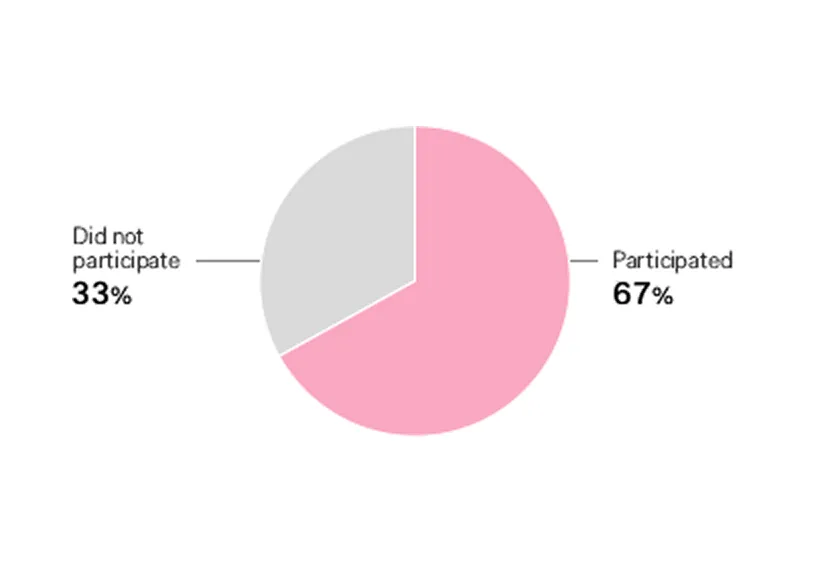
Participation in Workplace Well-Being Activities in Past Six Months
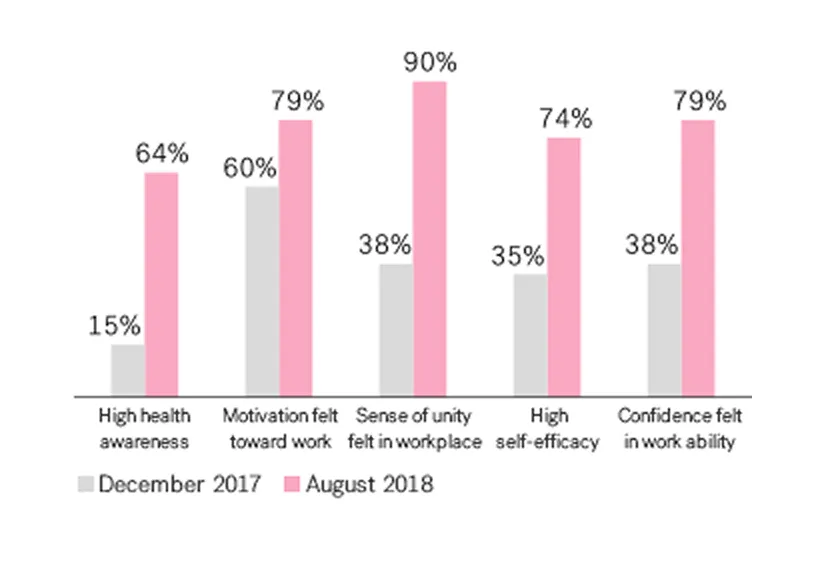
Changes in Awareness and Behaviors of Project Members
Energization of Workplaces through Stress Checks
The results of organization analyses via stress checks are being used to institute targeted measures aimed at items identified as important for specific workplaces (items that will contribute to improve work engagement). After initial stress checks in the fiscal year ended March 31, 2019, voluntarily participating workplaces conducted additional stress checks before the end of the fiscal year. These checks found that stress was down and work engagement was up at almost all applicable workplaces. Successful measures will be shared throughout the Company in the future to energize other workplaces.
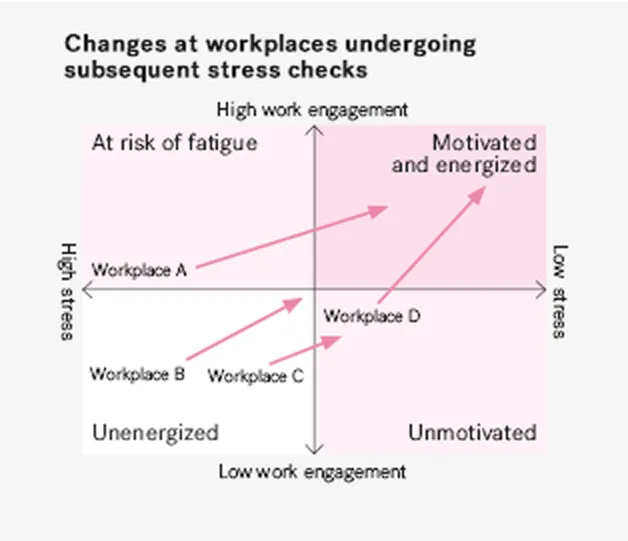
Hybrid Measures Based on Organization Energy Surveys (Organization Health Surveys)
With the aim of further energizing organizations, MARUI GROUP has introduced proprietary organization health surveys that allow for analyses of organizations with small numbers of people, which are conducted in conjunction with stress checks. These surveys are currently being performed at more than 100 organizations. The benefits of stress checks will be used together with organization health surveys to increase the accuracy of future measures.
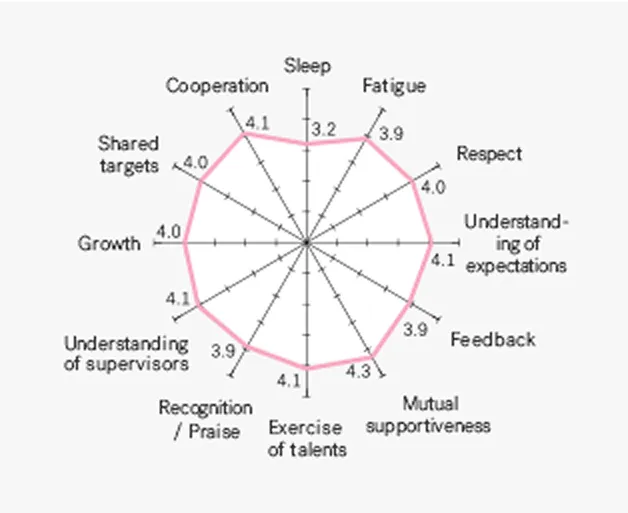
| Stress Checks | Organization Health Surveys | |
|---|---|---|
| Timing | Aggregation method | Minimum number of participants |
| Once a year, in principle | Specialized aggregation by external partner (90 questions) | More than 10 |
| Quarterly or at other freely chosen periods | Simple aggregation at workplaces (12 questions) | Around 10 (capable of surveying small numbers of people) |
Foundational Healthcare
MARUI GROUP believes that being healthy creates the foundations for achieving greater energy and happiness. It is therefore important for us to build such foundations to ensure that employees are free of disease and infirmity if we are to help create a society offering happiness to all through well-being management.
Work Style Reforms Creating a Venue for Contributions of All Employees
Recognizing that healthcare management is one facet of work style reforms, MARUI GROUP has been advancing reforms pertaining to work hour management and work system diversification since 2008. As part of these reforms, overtime reduction policies and targets have been set for each position, and shifts are formulated systematically for stores using up to 50 working patterns defined in 10-minute increments. In addition, processes are being optimized on a Groupwide basis. For example, processes related to delivering and returning products to storage and other back-office procedures at stores are handled by Group companies to enable store employees to be primarily positioned in customer service roles. As a result, average monthly overtime hours per person were 4.5 in the fiscal year ended March 31, 2022, while average annual overtime hours were 54. Average monthly overtime among head office employees was 7.4 hours in the fiscal year ended March 31, 2022, representing a reduction of more than half compared with the fiscal year ended March 31, 2008, while average monthly overtime at our stores nationwide was one hour, making for a reduction of six-sevenths from the same year. These reductions have improved productivity while reducing personnel expenses.
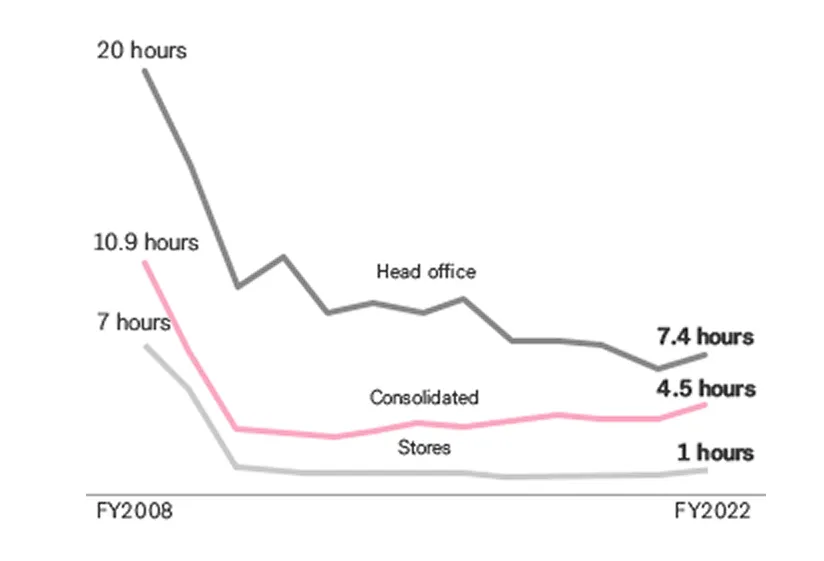
Average Monthly Overtime Hours per Person
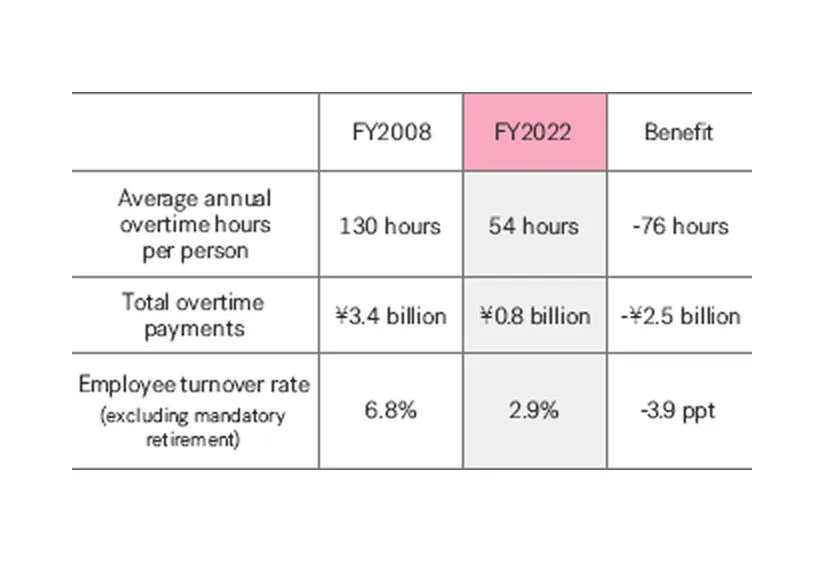
Overtime Reduction and Benefits
Foundational Healthcare Initiatives
We are advancing foundational healthcare initiatives through coordination between MARUI GROUP's Well-being insurance union, the Well-being Management Division, the Personnel Division, and workplaces. The healthcare promotion framework made possible by possessing its own directly operated health insurance union building is a powerful asset for MARUI GROUP.
Initiatives of Group Health Insurance Union
Using the Marui Health Insurance Union Building opened by its predecessor, the Group's health insurance union provides services including comprehensive medical examination, nicotine dependence treatment, and healthcare guidance for preventing obesity. In addition, the health insurance union coordinates with Group companies to provide strong encouragement for employees to undergo examinations while also planning and implementing other measures for improving the health of employees and their families.
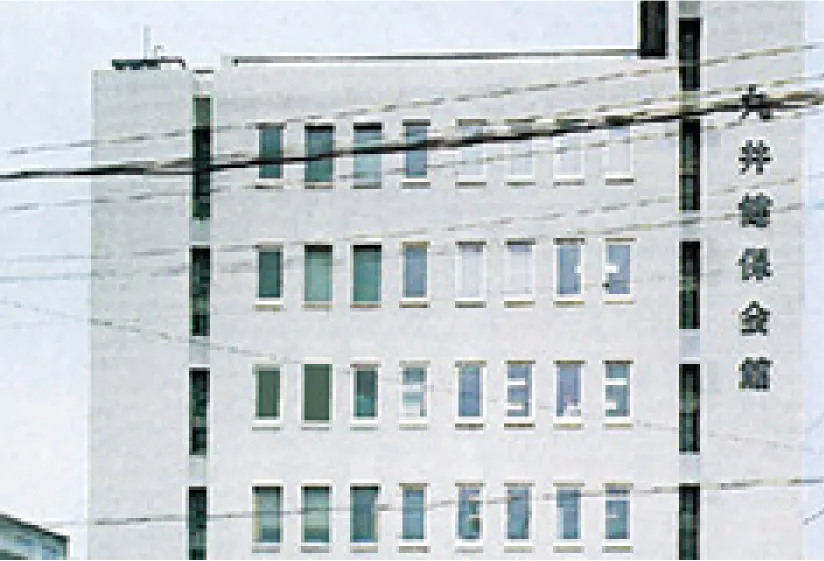
Marui Health Insurance Union Building at time of construction
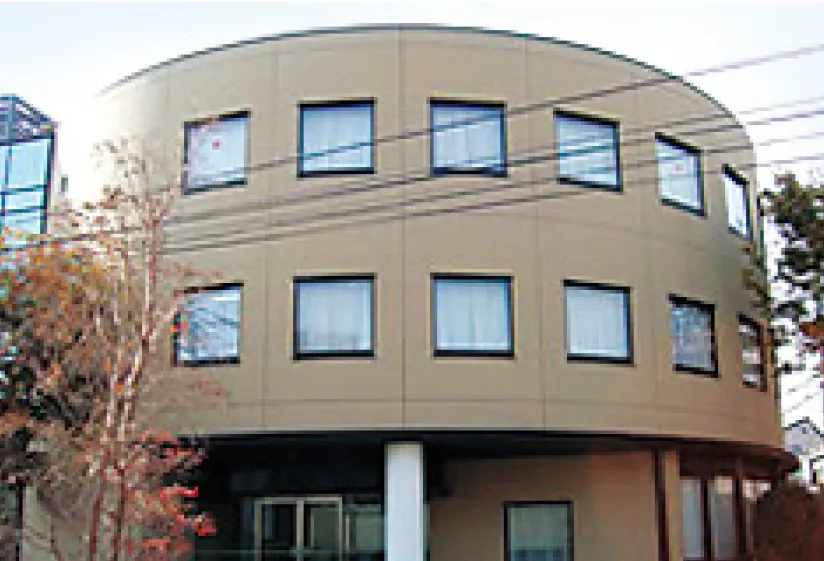
Marui Health Insurance Union Building today
Comments from contributors
Culture of Valuing Health Inherited from Forebears
To employees at MARUI GROUP, it is considered perfectly normal to undergo health checkups and even extensive health examinations. While this seems natural to us, speaking with those outside of the Company makes me realize that it is actually something quite remarkable. MARUI GROUP's health insurance union is primarily responsible for conducting employee health checkups, helping prevent serious illnesses, and providing tailored healthcare guidance, but there is a limit to what we can do on our own. To address this limit, the health insurance union coordinates with the Company to foster an intimate relationship between employees and the union in order to create an atmosphere that is like going to your primary care physician. This atmosphere is more conducive to motivating employees to care for their health than receiving health guidance from someone they have absolutely no connection with. We are able to realize such an atmosphere because of the culture of valuing health that has been inherited from our forebears.
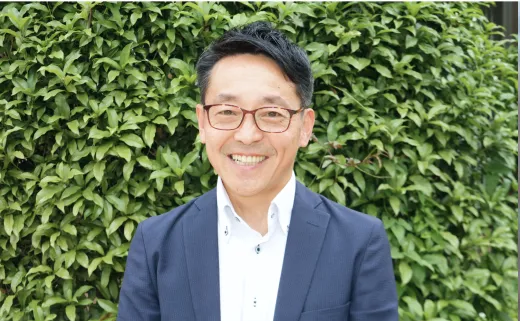
Shinji hirano
Full-Time Director of MARUI GROUP's Health Insurance UnionOverview of Foundational Healthcare
At MARUI GROUP, employee health risks are classified based on the results of health checkups so that support measures can be implemented. We recognize that the rise in metabolic syndrome rates and lifestyle disease risks that accompanies a higher average age of employees is an issue. To address this issue, we aim to raise the health literacy of all employees in order to inspire changes in awareness and behavior. We are also stepping up new initiatives targeting high-risk employees, such as those that have been designated for tailored healthcare guidance but have not achieved improvements in their health.
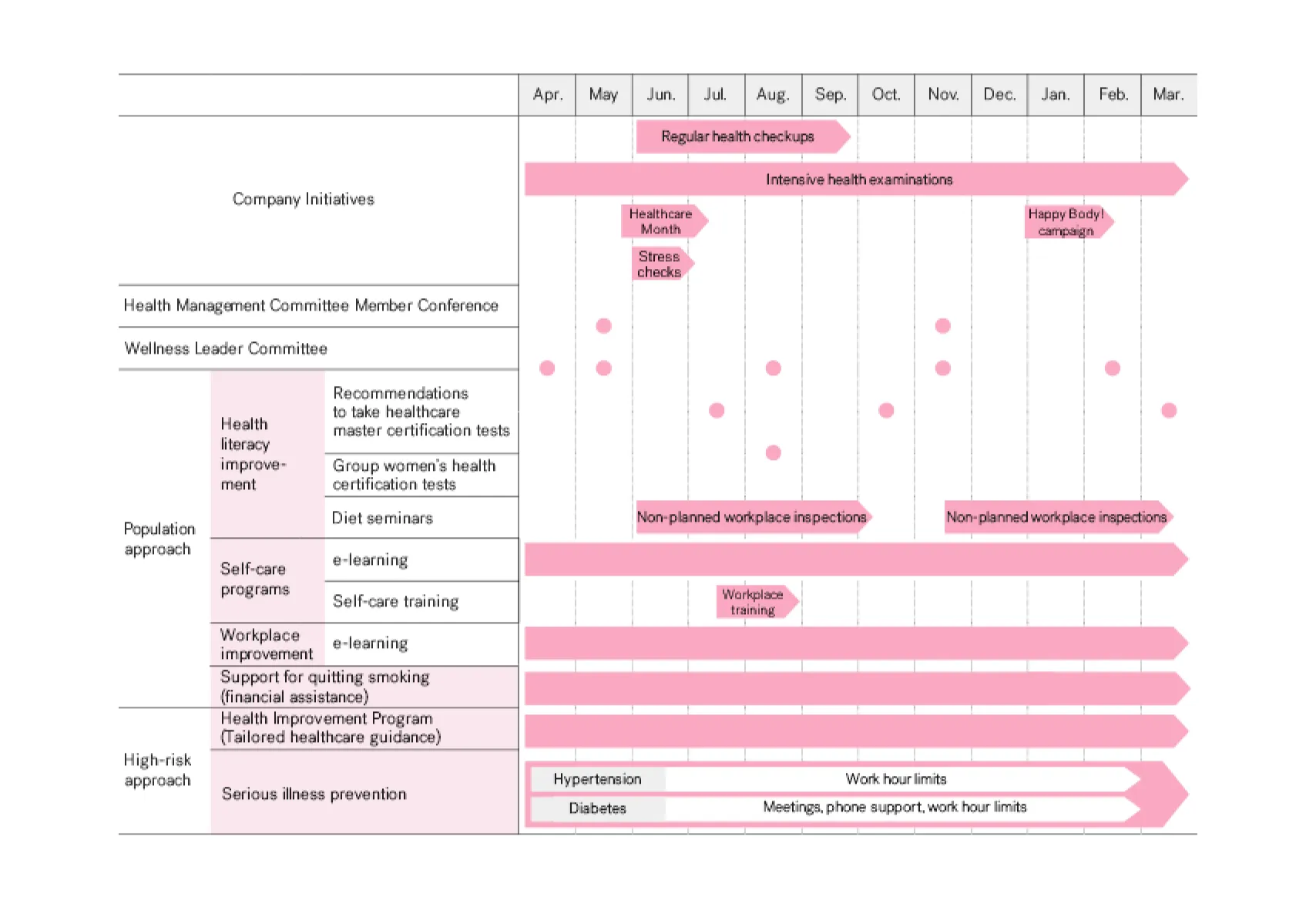
Support for Quitting Smoking
The ratio of employees that smoke at MARUI GROUP is declining with each coming year, but this rate still remains above the nationwide average. In a bid to address this issue, MARUI GROUP offers financial assistance to cover 70% of the cost for employees who have visited health institutions of their own volition with the goal of quitting smoking (up to ¥20,000 a year). This assistance can be used to cover the cost of associated medical examinations as well as nicotine patches, gum, and other items used to help kick the habit.
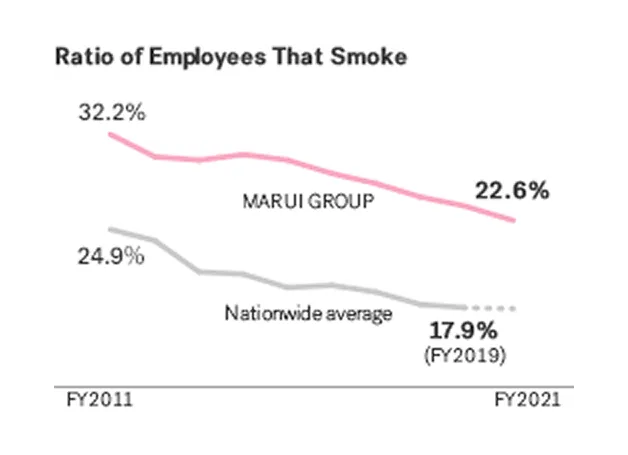
Evolution of Health Improvement Program for Reducing Metabolic Syndrome Rates
MARUI GROUP's health insurance union implements the Health Improvement Program, an original program in which tailored healthcare guidance is provided to employees suffering from metabolic syndrome by full-time medical staff. Workplace supervisors are responsible for encouraging employees to participate in this program, and participation can take place during work hours. The health insurance union's medical staff is exhaustive in its follow-up of participants. As a result, substantial reductions in metabolic syndrome rates have been seen following the launch of the program in 2008. Reductions have slowed slightly in recent years as the overall age of MARUI GROUP's employee base rises. Steps to address this issue have included speeding up measures by having employees subject to participation undergo interviews on the day of intensive health examinations. Another measure for reinforcing our efforts on this front has been including individuals that have participated in the program for two consecutive years, and would thus normally be exempt from participation, among the scope of employees subject to participation beginning in the fiscal year ended March 31, 2019.
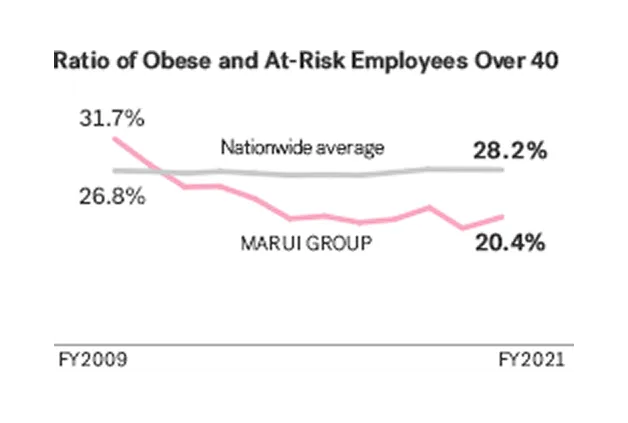
Health Literacy Improvement Initiatives
Healthcare Master Certification Test
Japan’s healthcare master certification test is a certification system launched in 2017 by the Japan Healthy Lifestyle Association. In March 2018, MARUI GROUP began encouraging employees to take this test to improve health literacy. As of August 2021, approximately 30% of employees had passed this test thanks to the Company’s financial assistance system.
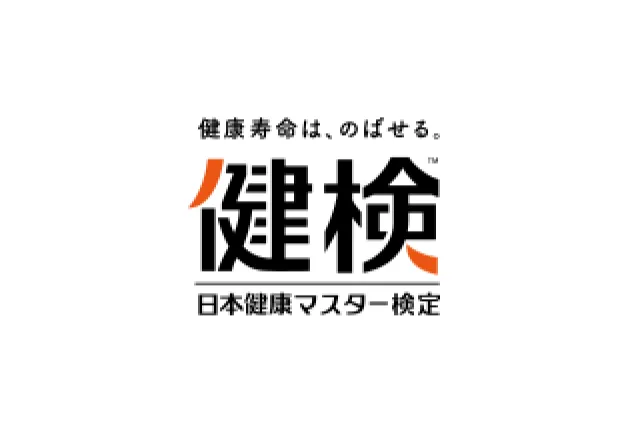
Women's Health Certification Test
MARUI GROUP encourages employees to take the women's health certification test sponsored by the Women's Healthcare Awareness & Menopause Network Society in order to spread awareness regarding the unique health issues women face based on their life stage. By acquiring and comprehending basic knowledge and information on measures for preventing and addressing health issues and passing this test, employees can become certified women's health experts. More than 520 employees, including wellness leaders, have acquired this certification.
Health Management Committee Members and Wellness Leaders
MARUI GROUP's health insurance union selects health management committee members and wellness leaders at each workplace, and these individuals play a central role in advancing healthcare initiatives at their respective workplaces. Health management committee members, who are selected from among managers, offer health-related consultations on general topics and thus have responsibilities including encouraging employees to undergo regular health checkups and advancing unique healthcare initiatives proposed at their workplaces. Wellness leaders, who are women, in principle, field health-related consultations to help address the health concerns unique to women, promote breast and cervical cancer screenings, and support health improvement activities.
HANASOU External Consultation Hotline
The HANASOU hotline is a consultation venue established through coordination with an external institution to provide support for addressing the work and health concerns of employees.
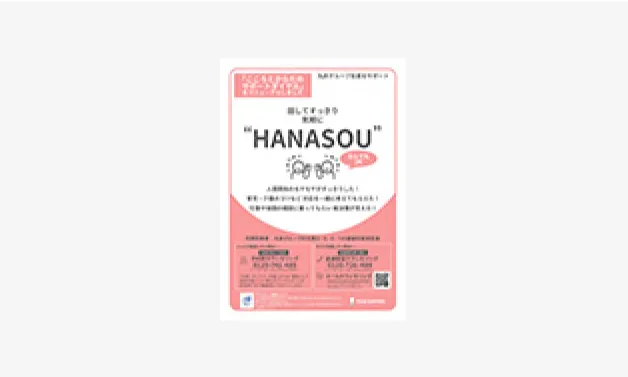
Wellness Data
